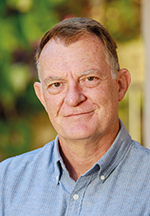

In the past few weeks two news story highlights caught my eye. The first was the news that in the first half of 2025, renewable energy, incorporating solar, wind, and to a lesser degree hydropower and bioenergy, has generated more electricity globally than coal did. To put numbers to it; renewables generated 5072 TWh vs coal’s 4896 TWh.
While this marks a milestone, for the first time, renewables have displaced coal as the largest electricity source globally, it was not read correctly by many commentators online. Many sources were spouting about how fossil fuels have been overtaken by renewable electricity generation, which is simply not true. Fossil fuels, combining coal, oil, and natural gas, still account for 61% of electricity generation. In fact, in the US, natural gas surpassed coal-fired turbines in 2023 to become the dominant electricity generation.
So, while this news is commendable and means we are on the right track, we need to realise that we still have a long way to go before clean energy is the main form of electricity generation.
The second item of news that I found very interesting, and somewhat relatable to the first, is that BYD is planning to build a supercharger network through South Africa. Executive vice president of BYD, Stella Li, recently dropped the bombshell during a press conference while visiting the country.
Li mentioned that BYD’s Megawatt Flash Chargers, currently being installed across various regions in China, will make up a charging network that will cover South Africa. Capable of providing 1 MW of power per vehicle connected to the network, these superchargers should provide up to 400 km of range to a vehicle in five minutes, just enough time to grab a coffee from a convenience store. (Note that this charging rate is currently limited to lab/ideal conditions).
While excited by the prospect, I am also sceptical regarding the timeline. Firstly, is Li intimately familiar with what is going on with South Africa’s electricity generation? I do know she had a meeting with the Eskom powers and signed a memorandum of cooperation aimed at advancing electric mobility. Besides that, however, I would love to know what else transpired during that meeting, but my guess would be that Eskom has promised the earth again without realising the implications of actually delivering.
Secondly, Li did state that the installation of these superchargers would start in BYD dealerships in South Africa before rolling out to strategic sites along the national highways. I am not sure whether she is aware that most of SA’s electricity transmission network has capacity constraints for new loads, and the likelihood of the current network being upgraded in the short term is slim to none.
Li also mentioned that the charging stations will use a combination of grid electricity and solar power, but did not disclose the ratio of each. This brings up another point: if Eskom cannot provide huge amounts of electricity to power these superchargers, they will need to rely on solar power. However, the solar PV infrastructure needed to provide enough power for a 1 MW charging station is enormous with an array comprising around 2000 solar panels being required (by my rough calculations).
So, while this news is welcome, I am slightly sceptical as to whether this country can implement it in the near term. In the long run, however, I do believe that reducing our dependence on fossil fuels and moving to cleaner renewable energy is ultimately a challenge I am willing to undertake.
| Tel: | +27 11 543 5800 |
| Email: | [email protected] |
| www: | www.technews.co.za |
| Articles: | More information and articles about Technews Publishing |

© Technews Publishing (Pty) Ltd | All Rights Reserved